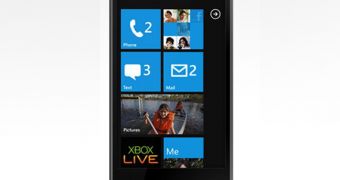Redmond-based software giant Microsoft is moving closer to the release of its new Windows Phone 7 mobile operating system and, as the official release date approaches more and more info on the solution emerges. Among the newly unveiled details, we can count the speech recognition technology the company packed within the platform, in an attempt to provide users with an enhanced mobile experience.
The upcoming mobile operating system should arrive on shelves with seamlessly integrated speech capabilities. The technology is related to phone functions such as search, navigation and dialing, and should offer Microsoft the possibility to raise the bar when it comes to the interaction between users and their mobile devices. All of these are part of Microsoft’s vision for speech and natural user interfaces (NUIs), it seems.
“Microsoft is creating rich, immersive and seamless experiences across devices, delivered from the cloud. Speech will become the tool we use to unlock the power of devices as their connectivity and capabilities accelerate,” Zig Serafin, general manager of the Speech Group at Microsoft, said during the 2010 SpeechTEK Conference in New York.
According to Microsoft, people should find the solution as simple to use as it can be. The upcoming release of Windows Phone 7 should come with integrated Bing services, something that would offer users the possibility to perform searches through using only their speech. For example, the technology would enable them to ask “Who is pitching for the Giants tonight?” and to receive a listing of starting pitchers or ticket and weather information for the game.
In Microsoft’s vision, the aforementioned NUIs would enable mobile phone owners to use their voices, or, sometimes, their bodies, so as to perform actions and access information. Interestingly enough, this would be different from what Android offers to its users in terms of voice search, as it requires for specific actions to be taken before performing a search. Microsoft’s solution is meant to eliminate any other “unnecessary” interactions with the device.

 14 DAY TRIAL //
14 DAY TRIAL //